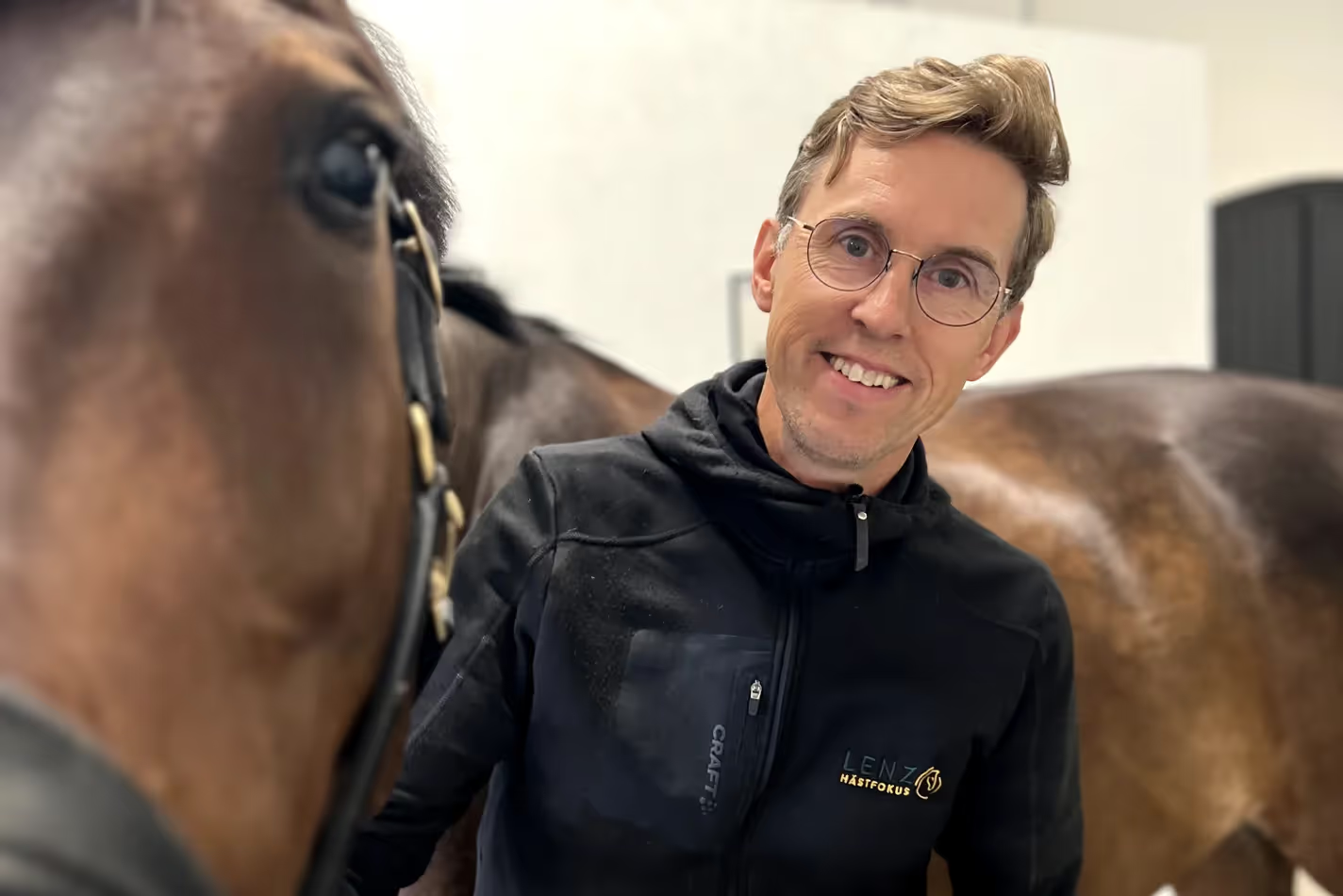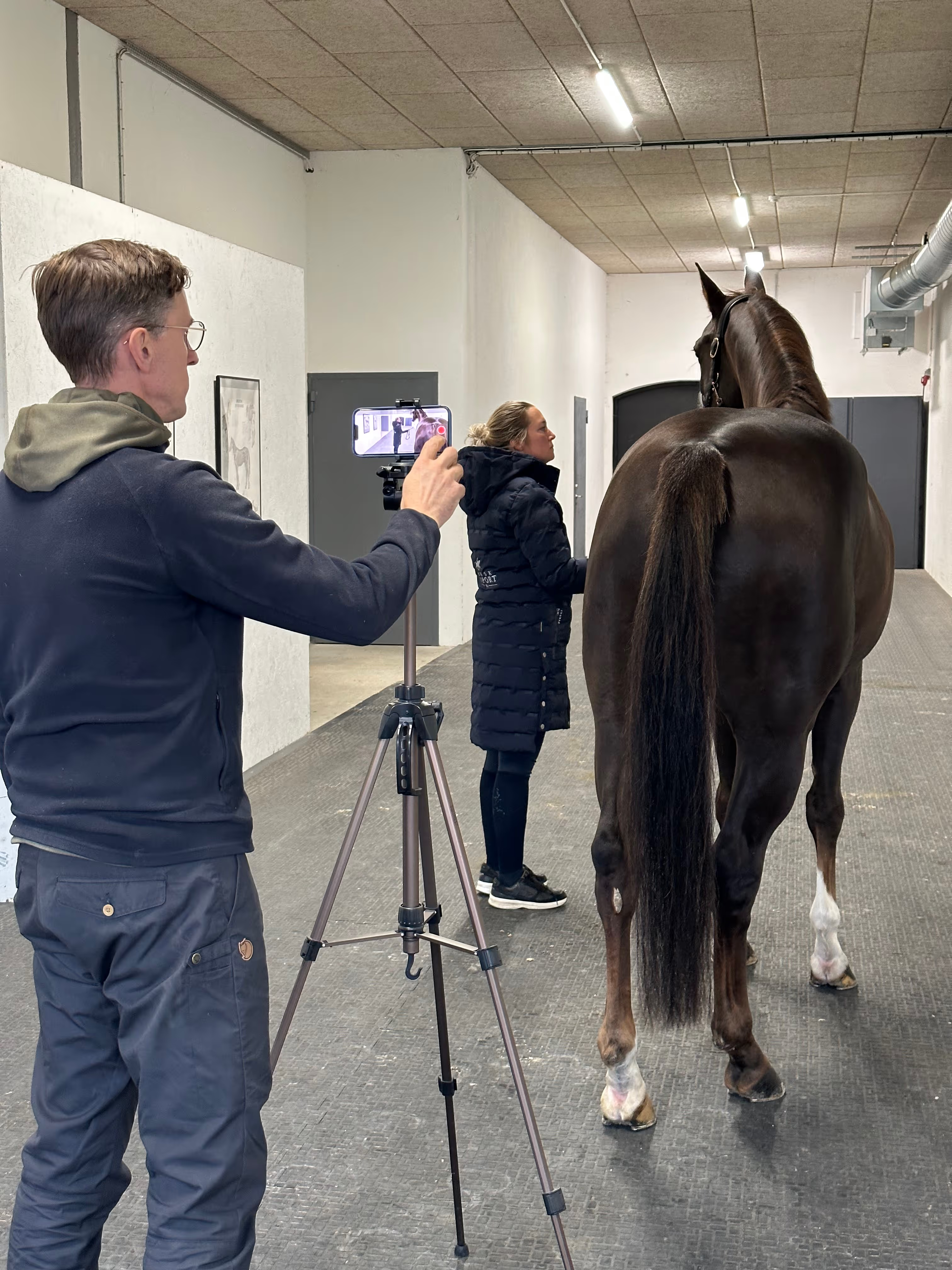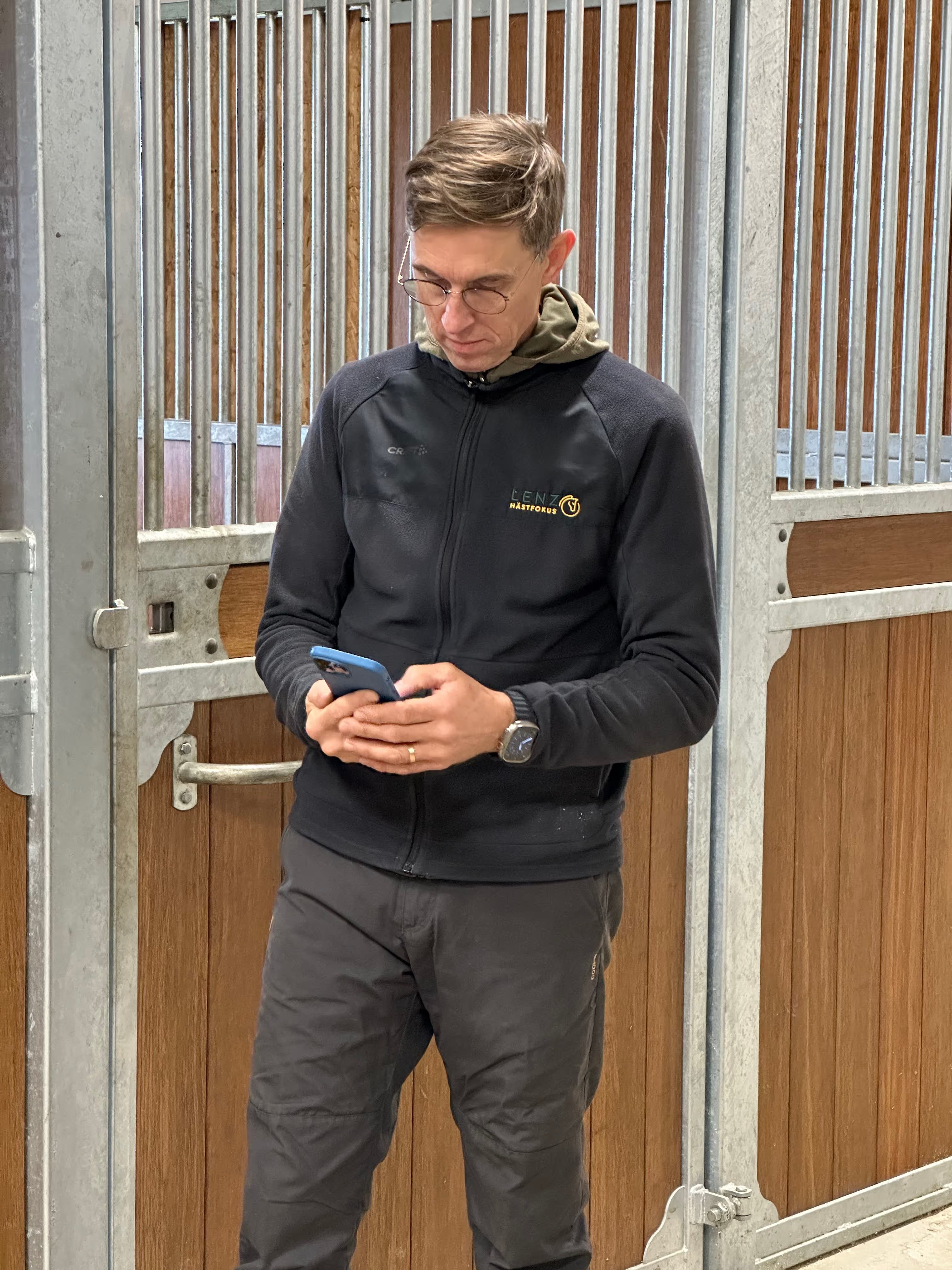
9 November 2023
The worst quality you can have if you want to do a good job is thinking that you always know best. This is one of the guiding principles of Johan Lenz, who runs an equine clinic in the south of Sweden, focussing on orthopaedics and performance problems in sport horses. Despite his long experience of horses - having owned horses all his life and worked as both a professional rider and dressage stable manager before graduating as a veterinarian in 2006 – he is new to objective motion analysis.
“I’ve questioned the use of it. But as it has become much easier to use, and realising how I could incorporate it in my work, I’ve come to see it as a good complement to clinical examinations. I appreciate that the system challenges me. It’s exciting. A good algorithm will always outperform a human being as it doesn’t become tired or hungry – or have any preconceived ideas.”
“Using objective motion analysis will probably make me a better veterinarian even when I don’t use it. It has made me more self-critical and improved my assessments. There is, of course, a risk that you become too dependent on the data and stop looking at the horse, something that you must always do. It should be seen as a complement, not a replacement of a clinical examination and the eye of an experienced vet, he says.

Johan Lenz says that he thinks about how we all are affected by our subconsciousness every single day. “You should be aware of how easily manipulated you are — and study and learn how the brain works during subjective assessments. Lameness assessments have traditionally been surrounded by a bit of magic and a certain amount of macho attitude — with sport horse vets going round fixing this and that, here and there”.
“But I believe you should be extremely humble and realise your deficiencies when you do your assessment. Objective motion analysis helps you to see a clearer picture. If, for instance, I longe a horse for the first time and it’s very tense, I may see a problem that appears much smaller the second time I longe it, and the horse has relaxed. Meanwhile, motion analysis might show the same results”, Jonah Lenz says.

Since we are all biased, according to Johan Lenz, this also includes horse owners. “It’s important to listen to the horse owner – but also to ask them questions to make them tell you things that they haven’t thought of, or perhaps don’t want to disclose, and that might be relevant for the assessment.”
“I always tell horse owners that I’m new to motion analysis, and they often find it exciting, accepting that you don’t get to the bottom of everything it shows. It’s important not to hide behind a facade and pretend that you have all the solutions. You can get an intuition for where the problem sits based on what you see during the examination, combined with your past experience. For sure, you get better with experience – but you can also be misled if a study or diagnosis sits on top of your mind."
Johan Lenz says that one of his personal role models is Dr. Jan-Hein Swagemakers, a German showjumping team veterinarian and a pioneer user of gait analysis. “He’s been working as a vet for many years but his mind is still so open to new things. That’s how I would like to be; constantly curious and testing new things. Like Sleip, which I’ve realised is both accessible and easy to use – and yet so reliable.”

